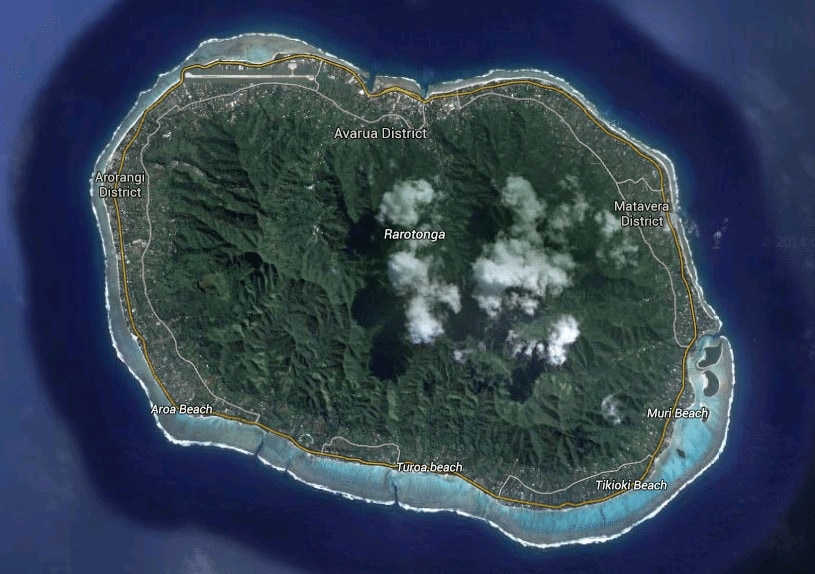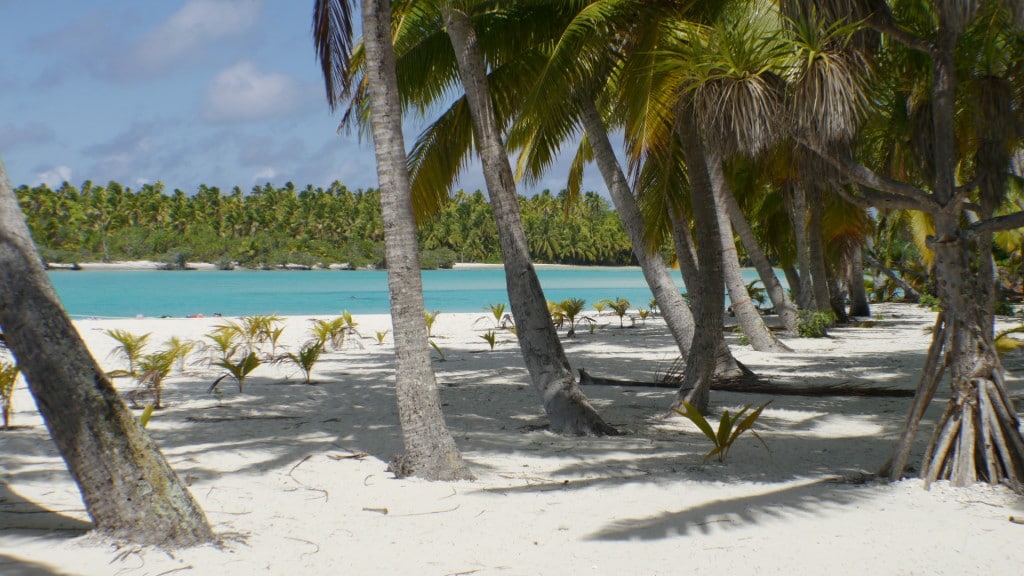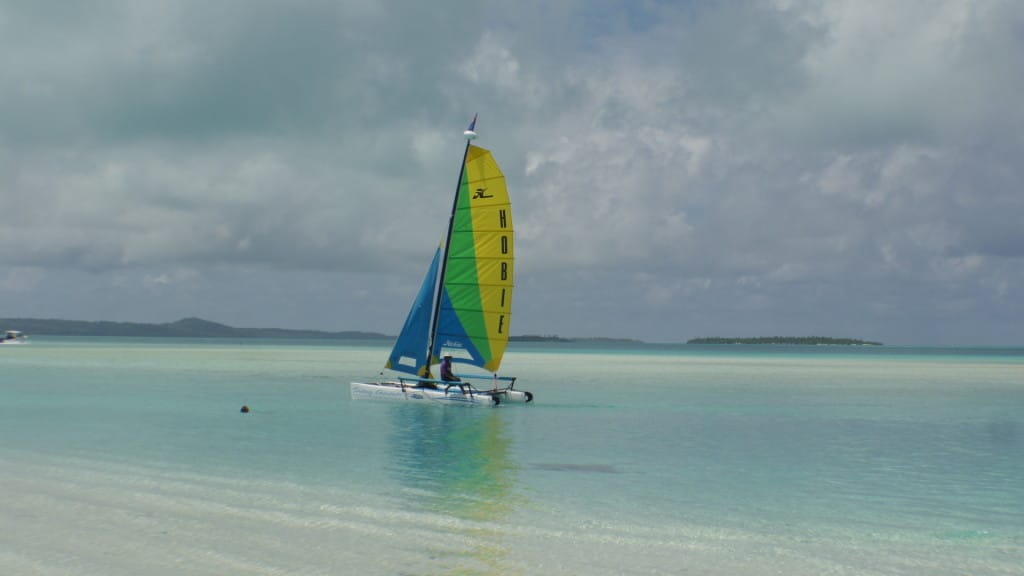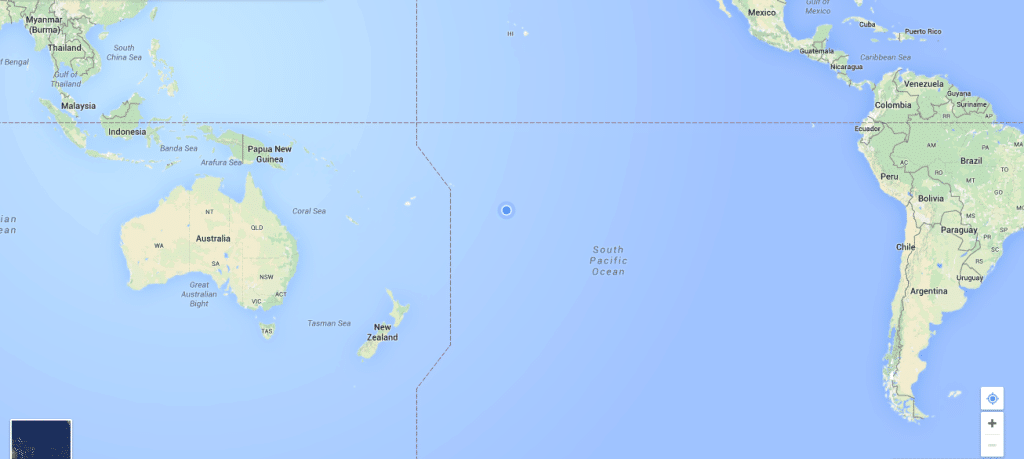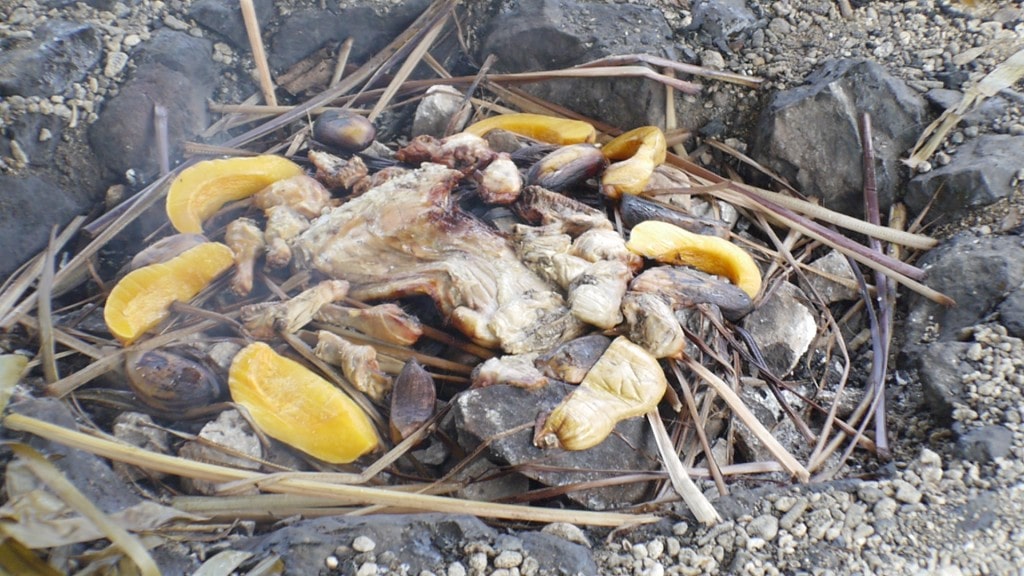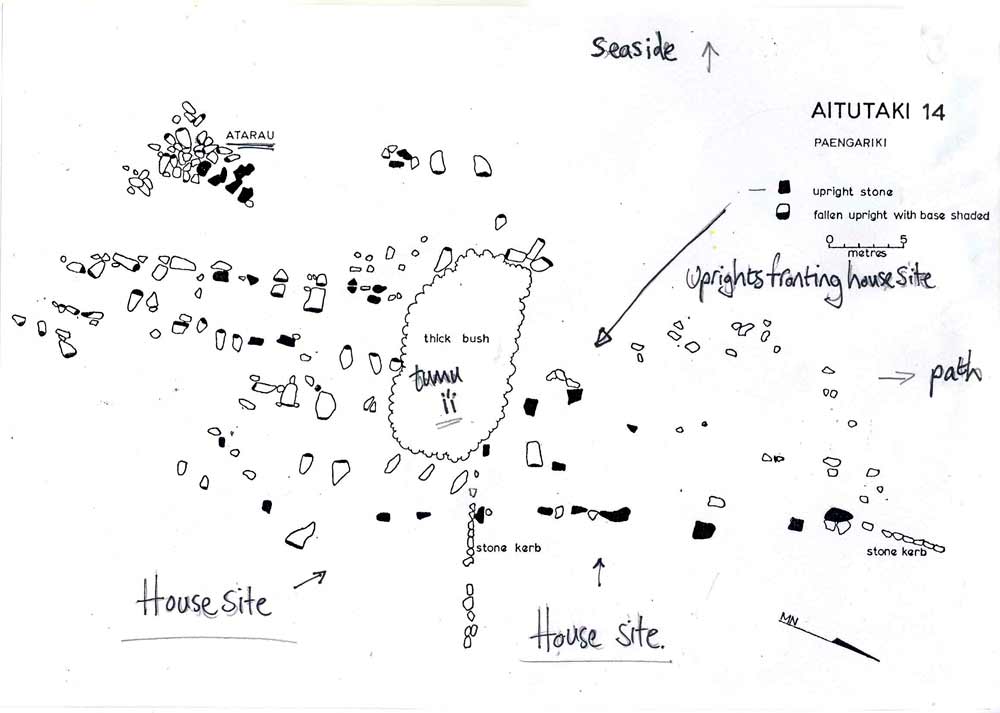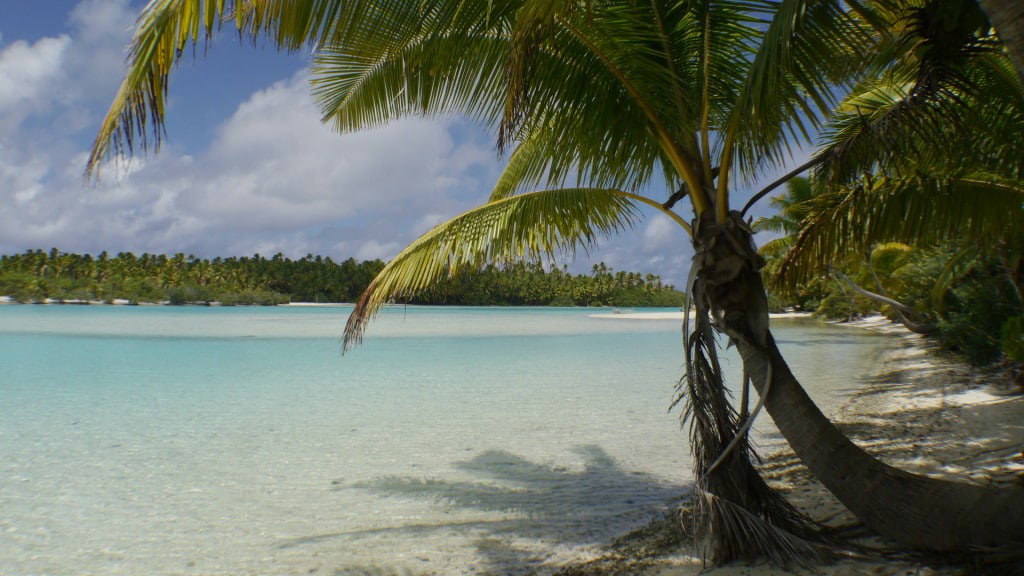Unfortunately, when we travel we always have expectations. That book we read about a love story happening in Venice made us believe that the entire city is steeped in romance then we go there and we are disappointed not to find them holding hands at every bridges.
What we have read, the images we conjured in our minds, the photos from friend’s vacations or what they told us on their return all have a very dangerous impact on our views of a place.
I am guilty of that. I often have the best of times in places I knew nothing of before I went, no expectations, no disappointments and only positive surprises. The Cook Islands was one of these places.
I had done very little research but I still had an image in my mind of what to expect. This was partially built over the experience in neighboring countries and partially based on my imagination. Did it meet my unclear expectations?
size=”30″]
1. It is small, very small
size=”30″]
I thought that Rarotonga was a “large” island, one that you would need a few hours to drive around and one that was populated. Don’t let the maps fool you, I was wrong on both. Rarotonga has around 12,000 inhabitants and Aitutaki, the second most popular island, about 1,000 so that is about one third of the amount of people who lives in my town in Spain. In fact, in my condo in Singapore there are half as many people as in the entire Aitutaki. After a couple of days, you start seeing the same faces again and people already recognize you. Of the Pacific countries, it is one of the smallest. I reckon if you stayed there for a month you would know everyone.
In terms of activities the choice in Rarotonga is also limited. Save for a couple of excursions you can take inland to the top of the mountain or around the jungle and a lagoon cruise points of interest are limited. I kept researching for a round island road trip but the amount of interesting stops are few. There are a couple of beaches you can snorkel at and a couple of historical buildings and sites but not much more. Rarotonga requires at most 2-3 days to see it all.
The small size is perfect for a solo traveller or someone looking to get a bit more insights into the local life. In Aitutaki and Rarotonga people are so friendly and hospitable that they will come up to you to chat or to offer help. I was trying to locate a lookout point in Aitutaki and an old man grabbed his bike and looked for me to show me. He had assumed that a foreign girl alone on a scooter in that area must be looking for the viewpoint. He was right! And so he not only led me there he also invited me to his half-finished house which had even more stunning views and then offered me a glass of fresh mango juice and gave me a coconut to take away. This friendliness emanates from the familiarity of such a small place where everyone knows everyone by name and where tourists are welcome and cherished.
size=”30″]
2. Not Pacific prices
size=”30″]
Prices in the Pacific vary significantly. Some countries like Solomon or Samoa are relatively cheap whereas others like Tahiti or the Cook Islands have similar prices to Europe, but don’t expect the same quality. Here, most things are imported and practically nothing is grown on site. As Akshay, the General Manager of a resort in Rarotonga, pointed out most families are self-sufficient but for things that visitors would need it gets imported from New Zealand by ship. Electricity is expensive, internet is satellite based and there is little land in which to grow vegetables or fruits as the island is mostly a volcanic rock. Petrol and, hence, taxis are prohibitive. A trip half way around the island will cost you almost N$50. The 45min flight to Aitutaki is $500. A casual lunch of eggs and pastry sets you back almost N$30 and a cocktail will cost you anywhere from N$10-20. This is not a cheap paradise or haven for backpackers. Even if you book self contained cheaper accommodation and shop at the local markets expect to pay Western sums.
size=”30″]
3. You need a local scooter license
size=”30″]
You can drive your car with a license from your home country but if you want to drive a scooter, which is the better way to see the islands, you need to pass a skill test before you can set out on your own. And then, you won’t even need a helmet as they are not required for lower speeds. In some islands other than Rarotonga they may be more loose with these requirements.. In Aitutaki I was not asked to take the test.
You may wonder if, in today’s world, not wearing a helmet should still be permitted but the reality is that the roads won’t allow you to go faster than 30-40km/h. More likely, the island life will soon kick in and you will find yourself cruising, relaxed, at 30km/h taking in the sights and the smells.
size=”30″]
4. No sailing
size=”30″]
Despite being an archipelago sailing in the Cook Islands is not as easy as I thought it would be as the islands are set apart from each other and there isn’t much in the way to keep you entertained. I had tried to charter a yacht for a week to explore and could barely find any option and then verified locally that sailing is not a common activity given the distances.
There are very few cruise ships stopping here too and there are limited port facilities – in fact there is no port in which to disembark so guests have to ferried to and from the cruise. Akshay tells me that the National Geographic Expedition cruises are going to stop in 2015 for the first time so maybe that will open the door to more visitors being able to enjoy the beauty of this place.
However, expect lots of sailing, or rather the more modern speed boat form, inside the Aitutaki Lagoon, one of the most beautiful places you will ever see. I did not have enough with one day so out of the 3 days I was there I went out twice. The range of blue and the bright white sand are only comparable to the most refined and beautiful places in this world.
size=”30″]
5. White warriors
size=”30″]
The Cook Islands is technical New Zealand territory. You pay with New Zealand Dollars, everyone speaks English as well as the local Maori dialect and they all have a New Zealand passport. Many Kiwis have moved here for work and some were born and raised here so there is a beautiful mix and match of cultures and races between the Maori and the Kiwi from British descend. Kiwis are so much part of the local culture that at an Island Show I even saw some white warriors and dancers performing, something which I had not seen in any other Pacific country and which was a refreshing take on heritage and culture preservation.
You can see the white influence and mix on the skin of Cook Islanders, much lighter in tone than in other places in Polynesia.
size=”30″]
6. No international brands
size=”30″]
It is part of New Zealand but chains have yet to arrive in the Cook Islands. I had wrongly assumed that the mother country would have exported some of the pervasive international brands but there are no hotel chains, no fast food outlets, no clothing brands and nothing which resembles Western progress, the Cook Islands is local and still preserves its old culture and traditions.
Beware the large boxes of KFC people may bring on board to their flights back to the Cook Islands for their family and friends!
size=”30″]
7. It is remote, very remote
size=”30″]
I knew that, but I had not fully understood how isolated the Cook Islands are. You can only reach Rarotonga from Auckland, Los Angeles or on the weekly flight to Sydney. I had imagined that it would be less remote simply because it is New Zealand territory but the reality is that this is a very isolated country and in there lies its beauty and appeal. Most people have not heard of it and would not be able to locate it on a map. Despite having connections to large cities and being featured in Survivor Cook Islands (US version) it remains a pretty remote part of the world.
Locals will very happily welcome you to their little piece of paradise and ask you to spread the word about their country if you’ve had a good time. I had to think hard to decide whether I wanted to keep it to myself instead!
size=”30″]
8. International menu
size=”30″]
This part surprised and disappointed me the most. I was expecting and looking forward to sampling the local recipes which I had fond memories of from my time in the Pacific in 2012. Instead, I found the choices to be rather impersonal and global. Aside from local fish and ika mata (raw fish in coconut – do you remember “poisson cru” from my time in French Polynesia?) the local menus featured curries, toasties, burgers, pizzas and caesar salads.
If you want to have true local food, your best bet is to join any of the tours. One of the side benefits of going on a tour is that it is customary provide the lunch which is almost always going to be a variation of the foods the locals eat and, if you are lucky, the bounty of an umu, an underground oven, used to cook local delicacies. I love the theatrical show that is put on when preparing the umu and the beautiful serving waved plates from palm trees, the decorative tiare flowers, the wild hibiscus, the colorful foods and, of course, the gourmet feast that ensues. Even if you don’t get to try umu food you are likely to be offered a BBQ which will be used as a substitute for the umu but almost as delicious.
Bottom line, go on as many tours as you can because, even if the tour is not perfect, the food will be!
size=”30″]
9. No dogs, but plenty of crabs
size=”30″]
Aitutaki is dog-free. Legend says that a chief’s daughter got bitten by a dog and so he prohibited them from being brought into the island. Instead you will see plenty of cats, sometimes crossing the road, and lots of crabs with a death wish deciding to come out at night and walking across the only island road. They are not as fast as roosters, chicken or cats in running away when a car approaches so chances are they will sadly be run over.
size=”30″]
10. Scattered heritage
size=”30″]
Whenever I travel I always try to take a piece of history home with me. I find it to be very rewarding and almost a matter of respect to the local culture who so hospitably welcomes you. In the Cook Islands I found this to be quite hard because there is no museum or center where you can learn about the local traditions, history or heritage. If, like me, you are also interested in finding out more I would recommend three things.
Firstly, attend the Island Feast nights, I found the one at the Edgewater resort to be very good from a heritage perspective, the food was average. The presenter will provide insights into the background of the songs, each representing one of the islands.
Second, although similar to the first one, Te Vara Nui is a relatively new but acclaimed attraction combining an Island Night with a Village Cultural Tour. The show happens over water during dinner while the village tour takes place before dinner and lasts about 2h. You will walk through various huts each of which portrays an aspect of Cook Islands heritage starting with a bit of history about the 7 canoes that left for New Zealand, missionaries and cannibalism. You will then have an introduction to the marae, move on to the traditional medicine hut, the fishing hut, the costume hut and ending with the coconut hut, the one which focuses entirely on this tree of life, the most important in island life. You can take the tour or show together or only do one.
Lastly, if you make it to Aitutaki, take a cultural tour with Punarei. Although rather controversial for his constant anti-Church remarks he offers a true insight into the heritage of the Cook Islands and its “lost identity”. You will prepare your own umu lunch, hear his stories about past traditions and heritage of the Cook Islands, then visit a local marae which was excavated recently. All along you will hear his stories and anecdotes. You will end the tour weaving your own plates from where you will eat the wonderful food which has been slowly cooking under ground since the beginning of the tour.
size=”30″]
11. The water in Rarotonga is cold!
size=”30″]
I am a bit of an anomaly. Since I have been living in tropical weather for almost a decade with barely any winters I get cold when nobody else does. In the Cook Islands I was expecting the water to be just that: tropically warm.
Whereas in Aitutaki where temperatures are higher than in Rarotonga all year round the water was pleasantly warm, in Raro I found the lagoon water so cold that my feet started to go numb. It may just be me, the Kiwis seems to have no issues with that…
Also bear in mind that because the islands are relatively south and closer to New Zealand than to Hawaii the winters can be slightly cooler and may require a jumper. Temperatures outside of the water reach minimums of 18 degrees in the months of July-September so don’t confuse Polynesia with heat.
size=”30″]
size=”30″]
Have you been to the Cook Islands? What else surprised you?
size=”30″]
- Check if you need a visa, get help processing it at iVisa.
- Never ever leave without travel insurance. Get affordable coverage from World Nomads or long term insurance from Safety Wing.
- I find all of my flights on KAYAK. Check their Deals section too.
- Search for all your transportation between destinations on the trusted travel booking platform Bookaway.
- I book all my day trips and tours via GetYourGuide, they are the best and their tours are refundable up to 24h in advance.
- Get USD35 off your first booking with Airbnb.
- Compare hotels EVERYWHERE at HotelsCombined and book with Booking.com.
- Compare car rental prices at Rentalcars.com

